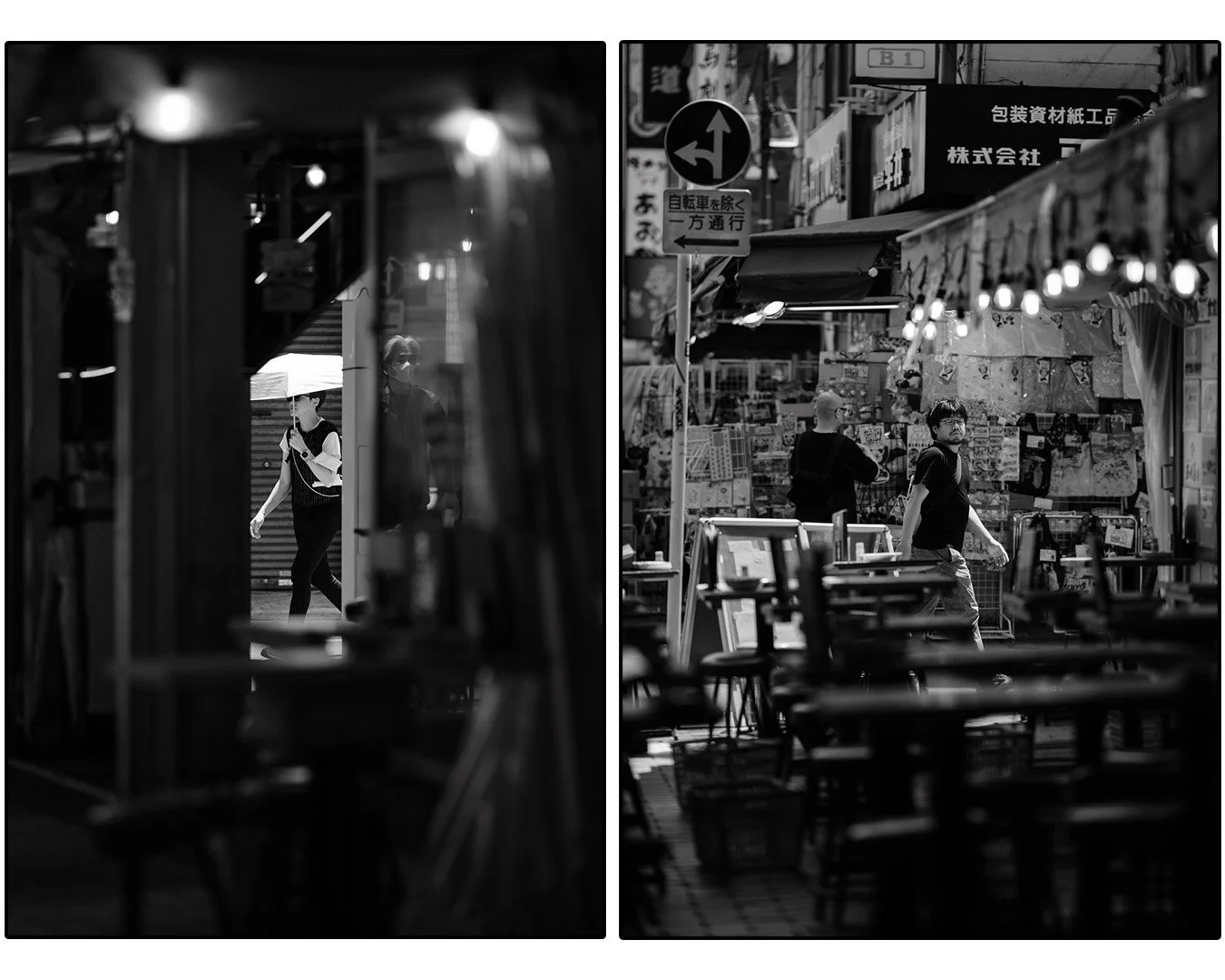Working The Scene or Work The Location?
Ueno Market Diptych
What is the Difference Between Scene and Location? What is Meant by, Working It?
Working the scene at its core requires the photographer to move their feet. Improve upon the original composition with minor changes. A step left or right, forward or backwards to get everything possible out of the scene. I do this every day. It is invaluable and has enabled me to improve so many images.
As we move, our brains have more time to calculate and recompose. Each time we do this, the scene matures and the chances of a winning final image drastically improve.
Working a location is the same as working the scene. The only difference is that the application is to a larger area, including multiple frames and concepts. For example, a busy street has a vein of light that people move through. There is a lot of opportunity for a great shot. Work the scene to fill the frame as best you can. Working the location asks questions like, what if I came earlier or later in the day? How would this frame be different? What if I shot this scene in a different season? How would the light change? What types of people are in the morning vs. the afternoon? How would this make my image better or different? That is working a location.
Working the location offers another option that can have more immediate results. This is beneficial when it may be your only chance to shoot a given spot. Using the example from above, a vein of light on a cool street. You work the scene, you come away pretty sure you have something outstanding. All finished, right? Once you have finished with the main course, take some time to check for a bit of dessert. Is there another spot near the first spot? What other techniques can be used to work on this location a little more?
Ueno Market Diptych
This is precisely what has been happening with my work lately. I have been exploring Tokyo as much as possible, and I find myself shooting a lot in a single area. Recently, I have been re-exploring Ueno Market. I know it well. I have favourite spots that often yield something good. In preparation for an upcoming street photography workshop featuring Ueno, I decided to look for as many new locations as possible.
I approached the market from the rear entrance at Okachimachi Station and started about one hour before it opened. Honestly, the first twenty minutes were not that great. I was forcing it a little, trying to get into the groove. Realizing this was the exact moment I found it—a vein of light with a great background. There is even a safe spot to stand and observe. That’s what I did. I needed the moment to see.
I shot and shot, changing techniques and dragging the shutter as bicycles sped past my scene. I knew I had something, but I also knew it wasn’t enough. There was great light in an area filled with character, so I started to work on several scenes at the same time. As each frame filled my mind, I worked hard on that scene to bring the idea to reality,
It is incredibly fulfilling to start with one scene and end up with four scenes and a handful of candid moments. A few days later, I returned and repeated the whole thing again. The results improved, and now I have a go-to spot in Ueno Market. I added it to my previous favourite locations, and my workshop preparation is complete. I can not wait to share with clients next month.
Conclusion
Finding a great shot doesn’t mean the work is done. If you like the feel of the location, work it the same way you would a scene. Move your feet a little, change your perspective a little, and maybe even switch focal lengths. Finally, return to the scene after a few days have passed and test it out again. Saving up these locations will serve you well, as you can always return and get something great there.
I would love to hear your thoughts and stories on working a scene, or answer any questions you might have.

